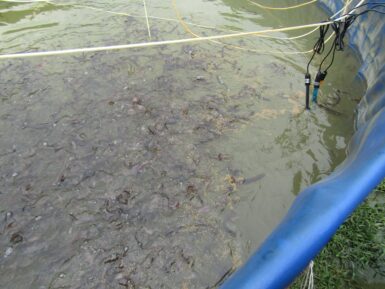
Grove - I2C Hub (6 Port)
Grove - I2C Hub (6 Port) is an I2C expansion interface board, compared with the old Grove - I2C Hub, the same size, two more connectors, almost half the price!
Overview
We've already released the Grove - I2C Hub (4 Port), now comes the 6 port version, the same size, two more connectors, almost half the price!
As you may know, the 7 address length I2C bus allows up to 128 I2C devices to access.
At present, there are over 80 Grove I2C modules in Seeed, however, normally only 1 or 2 Grove I2C connectors are available on the Seeeduino Board or the Grove Base Shield. What if we need to use multi Grove I2C modules in the system? The answer is Grove - I2C Hub (6 Port).
There are 6 Grove connectors in this hub, one input, five output, or you can even connect one hub with another, so that more devices can be plugged in.
Not only I2C but also can be used to control several synchronous change devices (like LEDs).
We did a survey and gathered some feedback about the old Grove I2C Hub (4 Port), many users mentioned that the 4 slots are not sufficient, so we add two more and keep the same 20*40mm size.
SeeedStudio always values the voice of our customers, and we appreciate our customers helping us grow and make us better.
Get Inspired
How to realize a servo and water sensor function using simple raw materials.

With the Earth’s population still on track to increase by another two billion people by the year 2050, finding ways to feed them without causing grave harm to the environment is a top priority. Currently, fish is one of the most widely consumed foods in the world, and a new technology called biofloc helps provide both a food source and environmental stabilizer to fishponds without the need for dangerous chemicals/processes. As part of element14’s Just Encase Design Challenge, Md. Khairul Taifur had the idea to create a device that could sit within a pond and report detailed telemetry for environmental markers, as well as correct minor water quality issues via the use of a heater and water pump. His system is based around a MKR WAN 1300, which is responsible for collecting data from each sensor and then sending it to the cloud with its onboard LoRaWAN module. To make the system independent from an external power source, Taifur included a small 5V solar panel, power management board, and rechargeable battery pack. Once his firmware had been finalized, everything was carefully placed inside of a waterproof electrical box and sealed to only expose the sensors. This biofloc monitoring system has great potential as a proof-of-concept of how future fish farms might operate in a more sustainable manner. You can read more about the project here on element14.








